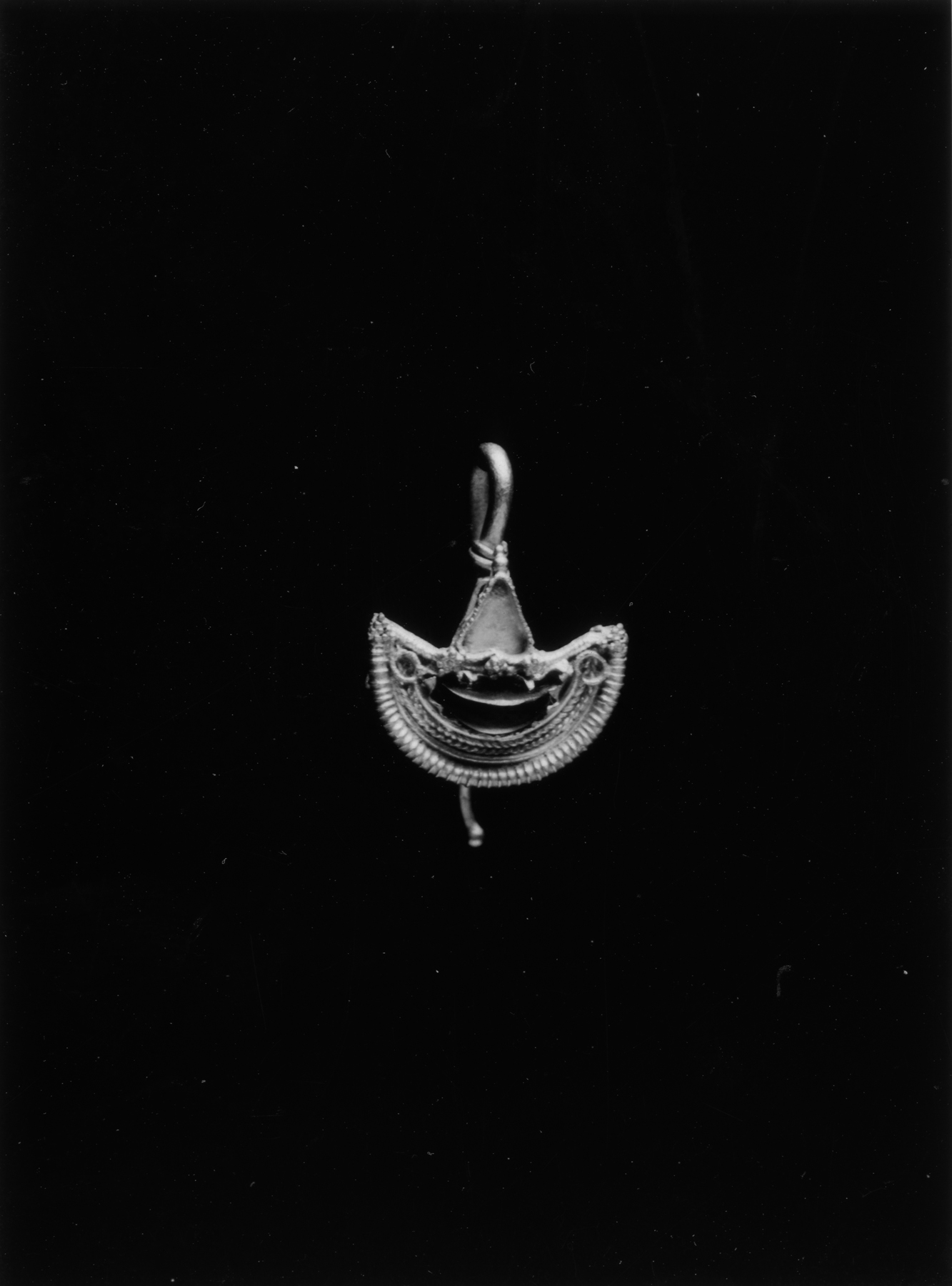Part of an Earring
The top part of an earring from which three pendants were once suspended, is a crescent-shaped sheet with an ivy leaf above. The crescent is edged on the bottom with thick twisted wire; on the top with very fine twisted wire. At each "horn" are tiny granule triangles, and a wire circle, probably once inlaid with enamel. In the center is a crescent-shaped garnet in a dog-tooth setting. Below are rows of smooth and braided wire; above are three granule rosettes. The ivy leaf is edged with a strip of metal, the top incised to resemble twisted wire; the inlay is missing. At the tip of the ivy leaf are two granules. Behind are a smaller crescent and triangle formed of sheets and strips which serve to raise the front up and away from the hook that pierced the ear lobe. The hook forms a loop from which a central pendant was once suspended. On each side of the crescent are parts of loops for the lateral pendants.
Provenance
Provenance (from the French provenir, 'to come from/forth') is the chronology of the ownership, custody, or location of a historical object. Learn more about provenance at the Walters.
Mrs. Breckenridge Long [date and mode of acquisition unknown]; Walters Art Museum, 1959, by bequest.
Exhibitions
| 1979-1980 | Jewelry - Ancient to Modern. The Walters Art Gallery, Baltimore. |
Geographies
Greece (Place of Origin)
Measurements
H: 7/16 x W: 1/2 in. (1.1 x 1.27 cm)
Credit Line
Bequest of Mrs. Breckenridge Long, 1959
Location in Museum
Not on view
Accession Number
In libraries, galleries, museums, and archives, an accession number is a unique identifier assigned to each object in the collection.
In libraries, galleries, museums, and archives, an accession number is a unique identifier assigned to each object in the collection.
57.1886


